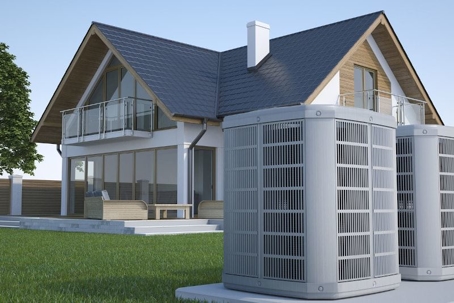Most homeowners in Chesapeake, VA choose a heat pump as their preferred HVAC system because of its versatility and energy-saving benefits. A heat pump has multiple components that work together to enable homeowners to enjoy these benefits. Here are some important heat pump components.
1. Compressor
A compressor increases the refrigerant’s temperature and pressure. By doing this, the refrigerant transfers heat from a high-temperature region to a low-temperature area.
There are two types of heat pump compressors. They include rotary and reciprocating compressors.
Reciprocating compressors use cylinders and pistons to compress the refrigerant. On the other hand, rotary compressors apply pressure on the refrigerant in a closed chamber. Of these two types of compressors, rotary compressors provide more benefits to homeowners.
Rotary compressors are more energy efficient and require less maintenance than their reciprocating counterparts. In addition, they produce less noise while running.
When a compressor breaks down, it may no longer raise the refrigerant’s pressure and temperature efficiently. Consequently, your heat pump will be unable to transfer heat into your home during the colder months. Some indicators that show your compressor is faulty include a vibrating outdoor unit when you start your heat pump, strange noises from your outdoor unit, refrigerant leaks and high energy bills.
The compressor is the heat pump component that consumes the highest amount of electric energy. Therefore, acting early when you notice these signs will help you save on energy costs and restore your comfort.
2. Blower Motor
When your heat pump heats the indoor air, the blower motor pushes this warm air from the system into your home through the ductwork. The types of blower motors available include single-speed and variable-speed units.
A single-speed blower motor blows air into your home at 100% capacity all the time. On the other hand, a variable-speed blower motor operates at different capacities to keep your home’s temperature more consistent.
For instance, let’s say you need to raise your home’s temperature by a few degrees. The motor can operate at 40% or 60% capacity instead of working at full capacity. This feature helps you to save on energy costs.
A variable-speed motor also helps to distribute the heated air better than a single-speed one. This helps to achieve uniform temperature distribution throughout your living space.
The “ON” and “AUTO” settings on your thermostat prompt the blower motor to start working. The ideal setting is the “AUTO” setting because the setting signals the blower motor to run only when the heat pump is heating your house. The “ON” setting may cause your home to remain cold and uncomfortable because the blower continues running even when the heat pump is not heating your home.
3. Condenser and Evaporator Coils
The outdoor heat pump unit houses the condenser coil, and the evaporator coil is usually indoors. During the hotter months, the indoor evaporator coil absorbs heat in your house and relays it to the outdoor condenser coil with the help of the refrigerant. The condenser coil then releases this heat to the outside environment.
During the colder months, the condenser coil takes up the evaporator coil’s roles and starts absorbing heat from outside. Dirt and debris may inhibit the performance of these coils, interfering with their ability to absorb and release heat.
4. Refrigerant
A refrigerant is a special fluid that circulates in a closed loop between the condenser and evaporator coils. It helps to transfer heat from one area to another.
Damages on the refrigerant lines may cause the fluid to leak, reducing your heat pump’s ability to heat or cool your home. The fluid can harm humans and the environment, so it’s vital to seek a technician’s help if you notice a refrigerant leak.
5. Reversing Valve
A reversing valve is a component that allows your heat pump to carry out both heating and cooling functions. The component changes the direction in which the refrigerant flows, depending on the season. Your heat pump may be unable to switch from cooling to heating mode if the component breaks down.
Contact Climatemakers for quality heating services if any of your heat pump components develops issues. We will repair or replace the problematic parts to ensure nothing interferes with your comfort.
Image provided by iStock

